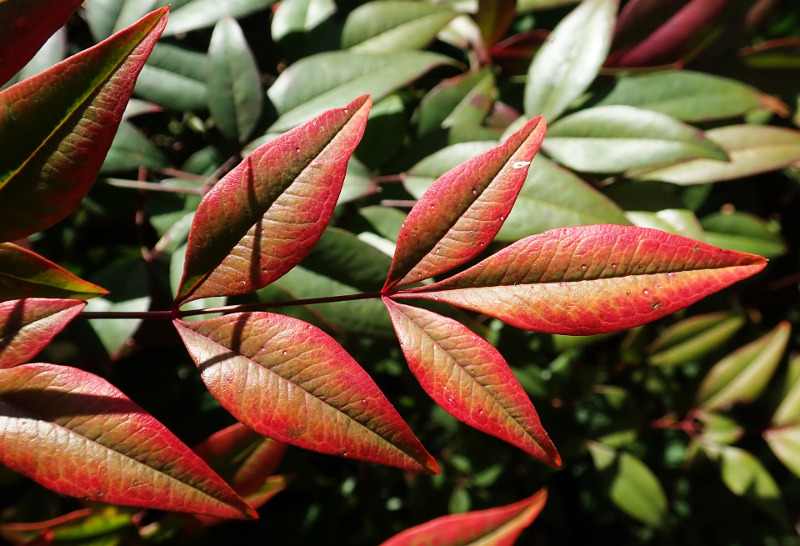Deer typically avoid Nandina, likely because of its bitter taste and the highly toxic cyanide all the parts of the plants contain.
However, when they are hungry enough, they have been known to eat them. In fact, although it is often on many “deer-resistant” lists, according to Rutgers University this plant is Occasionally Severely Damaged on their rating scale from Rarely Damaged to Frequently Severely Damaged.
| Rarely Damaged |
| Seldom Severely Damaged |
| Occasionally Severely Damaged |
| Frequently Severely Damaged |
How to Keep Deer Away from Nandina?
You have several options to keep deer from munching on your Nandina, for their safety and the plants’. The most effective would be a strong physical barrier. This could be a cage built for a small area made of strongly welded high-gauge wire made for large animal fencing. Another option is fencing your garden with a fence at least eight feet in height – they can jump that high.
Or you can look at repellents, which will need to be reapplied throughout the season, after rainfall or watering. These can range from home-made pepper spray, bars of certain soaps hung around, or store-bought repellents.
Will Nandina Come Back After Deer Eat Them?
If enough of the plant is left, Nandina will likely grow back – or reseed nearby. To help nurture it back to health, surround the plant with chicken wire or a strong tomato cage, and apply the deer repellent of your choice as needed.

Nandina grow only at their tips. Within reason, prune badly damaged branches to the ground. If there are too few branches, reduce the height of branches in groups by 1/3 and 2/3 to create a balanced appearance. It should flower and fruit again next year.
Sources: Rutgers New Jersey Agricultural Experiment Station ‘Landscape Plants Rated by Deer Resistance’ 2018
 |
Author Erica Browne Grivas - Published 11-15-2021 |
